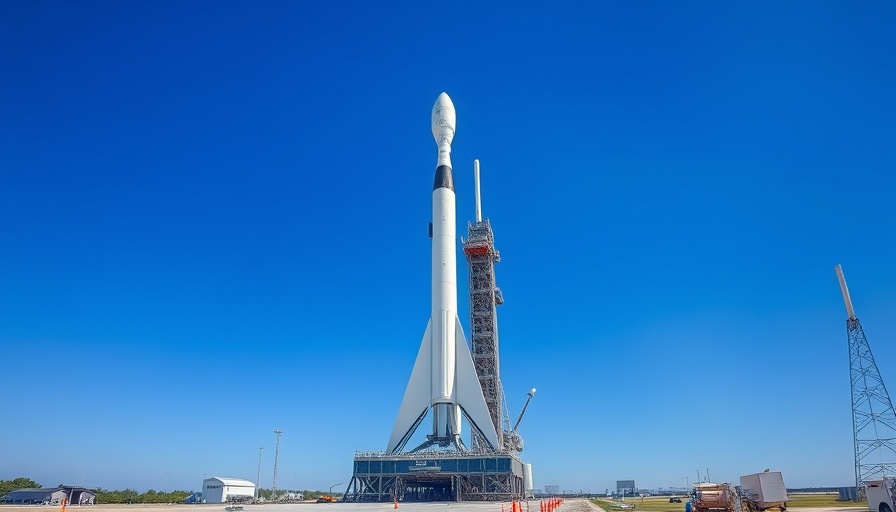
SpaceX Scrubs Crew-10 Launch: What Happened?
In a surprising turn of events, SpaceX has postponed its Crew-10 astronaut launch intended for NASA, which was scheduled for the evening of March 12, 2025. Just under an hour before the launch, the company announced that a hydraulics issue related to the transporter-erector—an essential structure for holding the Falcon 9 rocket in place—forced the delay. Crew-10 commander and NASA astronaut Anne McClain gracefully acknowledged the situation, stating, "Great working with you today," and emphasizing the team's readiness to launch when the equipment is operational.
Understanding the Technical Concerns
The primary issue reported was with a clamp arm designed to secure the Falcon 9 rocket during its vertical position on the launchpad. According to Mike Ravenscroft, the launch vehicle office manager with NASA's Commercial Crew Program, this problem raised concerns about the stability of the vehicle at liftoff. NASA confirmed that the spacecraft itself, including the Crew Dragon capsule named Endurance, was not at fault, indicating that the mission could be rescheduled for later in the week.
Potential Rescheduling: Looking Ahead
SpaceX has identified potential backup launch opportunities on March 13 and 14. However, no definitive new launch date has been set as the team assesses ways to rectify the hydraulic issue. This mission is crucial, serving to replace the current crew aboard the International Space Station (ISS), which includes astronauts Butch Wilmore and Suni Williams who have been in space since last June. Their timely return hinges on the successful completion of the Crew-10 mission.
The Importance of Crew-10's Mission
The Crew-10 team consists of Anne McClain and Nichole Ayers from NASA, Takuya Onishi from the Japan Aerospace Exploration Agency (JAXA), and Kirill Peskov from Russia's Roscosmos. This mission not only aims to maintain staffing levels aboard the ISS but also sets the stage for a handover with the current crew, helping in scientific and technological demonstrations critical to ongoing research in space.
Echoes from Previous Launch Sequences
NASA and SpaceX's partnership has seen numerous successful missions, but each launch is tightly monitored for safety and reliability. Recent history suggests meticulous attention to detail, especially when it comes to handling hydraulic systems. The Crew-9 mission, designed to facilitate an earlier return for astronauts, experienced issues that further delayed operations on the station. As NASA focuses on maintaining consistent staffing aboard the ISS, delays like these can ripple along the schedule of planned missions.
Implications for Future Space Missions
The postponement of Crew-10 serves as a reminder of the intricate and often unpredictable nature of space travel. Each mission involves complicated engineering that is susceptible to unforeseen complications. The successful resolution of these issues not only assures the safety of astronauts but also contributes to the ongoing innovation within aerospace technology. As McClain stated, there is a sense of readiness and anticipation among the crew and support teams, a testament to the dedication required in this field.
Conclusion: Keeping an Eye on Space Innovation
The Crew-10 launch delay may seem like a small setback but highlights the rigorous challenges facing modern aerospace missions. Staying informed about these events is crucial as SpaceX and NASA work to ensure that the future of human space exploration remains bright. As we await updates, we recognize the exciting and innovative pathways that lie ahead in space exploration.
 Add Row
Add Row  Add
Add 




Write A Comment